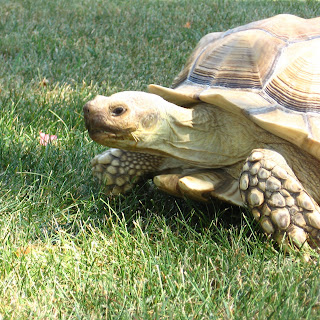From the contour farming of southeastern Ohio, where the terrain makes straight lines impossible and the crops snake around through the Appalachian foothills, to the low, flat, tiled fields of northwestern Ohio that drain the remnants of the Great Black Swamp, I have observed many types of farming practices. I have seen truck farming in northern Ohio, where migrant workers arrive annually to pick tomatoes and other vegetables by hand, and large fields in central Ohio, managed by one man with enormous machinery. I understand terms like crop rotation and no-till farming. I have known dairy farmers and those who ran beef cattle, people who kept sheep, even swine producers.
Of course, like most of you, I am familiar with the major crops grown 'round the state:
And, there is winter wheat, that first brilliant green of early spring, and alfalfa and apple orchards, and even vineyards.
But, it wasn't until I moved to the most rural part of southwestern Ohio that I learned we grew this crop here, north of the Mason-Dixon line:
Specifically, burley, grown primarily for cigarettes. Seventy percent of burley is grown in Kentucky, with the remainder being grown in a narrow belt encompassing seven other states - Tennessee, North Carolina, Missouri, Virginia, West Virginia, Indiana, and surprisingly, Ohio.
When I was looking to buy a home with a bit of land, I was intrigued to see how many real estate ads included a line about the property's "tobacco base." This is the amount, in hundreds of pounds, of tobacco a farm is allowed to produce. Once your farm has been rated for a certain amount of tobacco production, you must plant and grow that amount regularly. If you fail to utilize your allotted tobacco base after a certain number of years, you lose the right to grow tobacco in the future.
Now, as an ardent anti-smoker, I was in a quandary. What would I do if my dream home included a tobacco base? On the one hand, I could lease the rights to a local farmer, adding a nice little bit of cash income to my personal bottom-line, but did I have the right to profit from a crop used to produce something I consider a killer? On the other hand, if I didn't utilize my tobacco base, my property value would be diminished and I would lose money at resale.
Thankfully, I didn't have to face this dilemma, as my 5 acres didn't include a tobacco base. Living among tobacco farmers as I have for the past 11 years, I must say that, even though I hate the end product, I have to admire the men who raise burley. It's not an easy job.
Everything about tobacco farming must be done by hand, from setting out the seedlings, which were started indoors in a hydroponic soup, to hoeing the weeds around the young plants, to hand pruning the suckers at the base of the plants and the flower spikes at the top, to the harvest, which occurs in late August or early September each year.
A large sharp tool, called a tobacco knife, is used to cut the plant stalk at the base. Workers then spear the stalks, with the leaves still attached, and thread them onto a four foot long tobacco stake, which is sharpened at one end.
The completed tobacco stakes are left standing in the field, to be gathered and loaded onto a wagon equipped with racks that allow the plants to hang downward. The stakes are then transported to tobacco barns to be air-cured.
Air-drying burley is a slow process, taking weeks for the tobacco to turn from green to yellow to brown. Too much moisture, whether from rains or ambient humidity, can cause the entire crop to rot. Too little, and the drying leaves don't turn brown. The special design of the tobacco barn is essential to the drying process.
Tobaccos barns are unique structures. Nine or ten months of the year, they stand empty, like this one.
Or, they may be used for temporary storage for farm equipment.
It is only in the fall that they come into their own and are able to serve their primary function, the storage of burley tobacco. It is then that unusual pattern of cross beams fulfill their destiny, supporting the four foot long stakes heavy with freshly harvested plants.
It is then that the narrow doors on the sides are opened to allow the tobacco to air-dry.








